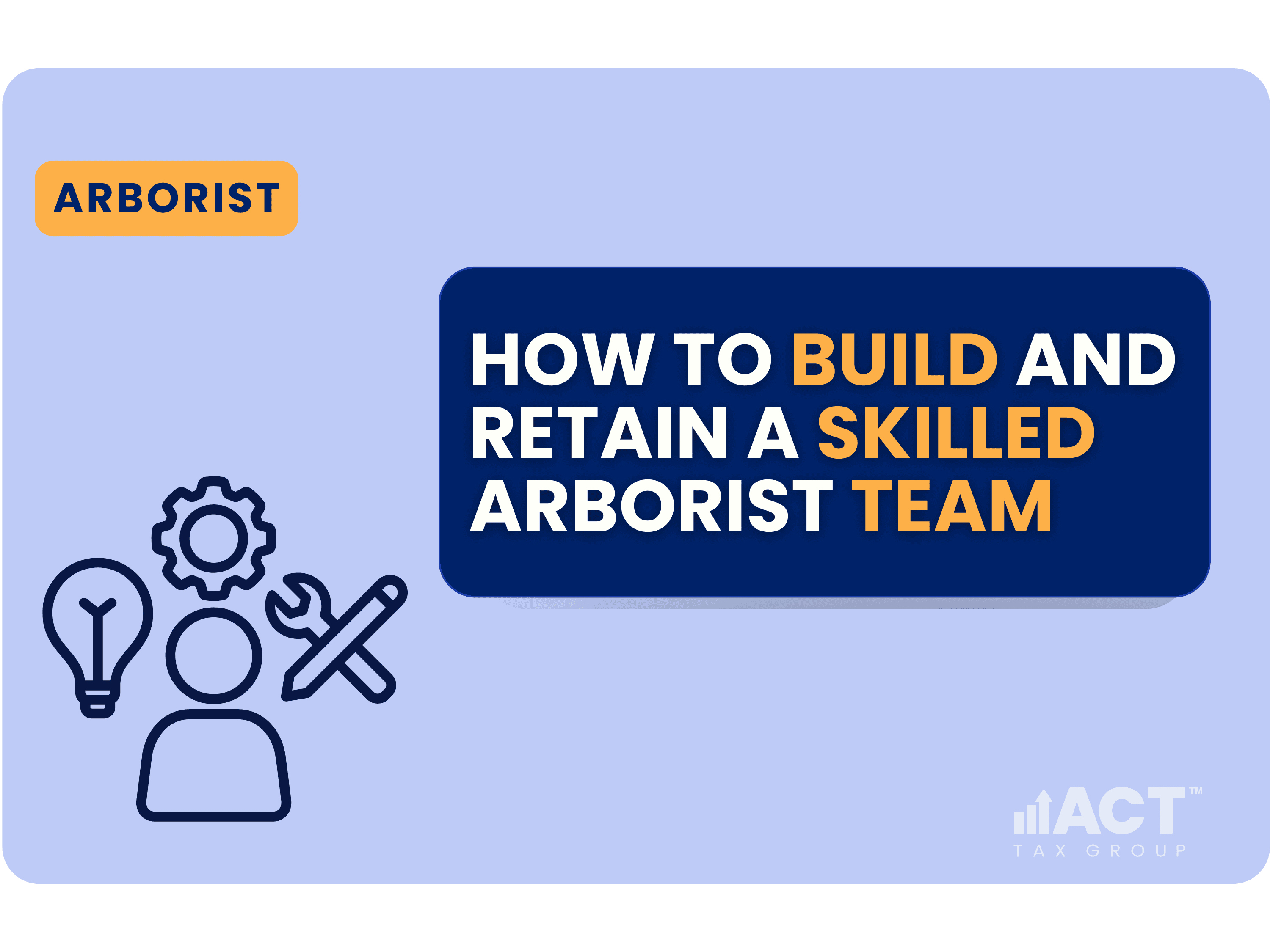
How to Build and Retain a Skilled Arborist Team
Share this article
Building and retaining a skilled arborist team is crucial for any tree care business looking to thrive in Australia’s competitive arboriculture industry. Skilled arborists are in high demand, and businesses must adopt strategic hiring, training, and retention practices to secure and keep top talent. With the right arborist team, your company can efficiently handle tree removal, tree pruning, tree maintenance, tree risk assessment, and tree inspections while ensuring employee satisfaction and job satisfaction. In this guide, we’ll cover key steps to building a strong team and ensuring they remain engaged, productive, and loyal.
1. Attracting the Right Skilled Arborist Team
Create a Strong Employer Brand
To attract top-tier arborists, your company needs to stand out as an employer of choice. Highlight your company’s values, safety culture, tree management expertise, arborist services, training programs, and career development opportunities in job postings and marketing materials. Emphasize benefits like free quotes, competitive compensation, and commitment to employee development.
Optimise Job Descriptions
A well-crafted job description should include:
Clear role expectations and responsibilities
Required qualifications (e.g., Certificate III in Arboriculture)
Competitive compensation and benefits
Career paths and employee development opportunities
Work-life balance incentives
Leverage Multiple Hiring Channels
Use various platforms to find skilled arborists:
Online job boards (Seek, Indeed, Arborist Network)
Industry associations (International Society of Arboriculture, Arboriculture Australia, local tree care groups)
Social media (LinkedIn, Facebook groups for arborists)
Referrals (Encourage current employees to refer skilled arborists)
2. Training and Development for Skill Enhancement in Tree Removal and Tree Species Management
Provide On-the-Job Training
Investing in ongoing training ensures your team stays updated with the latest tree pruning, tree removal, tree maintenance, and safety protocols. Consider:
Mentorship programs pairing new hires with experienced tree surgeons
Workshops and certifications to upskill employees
Safety training to meet industry standards and reduce workplace injuries
Encourage Industry Certification
Supporting your team in obtaining relevant certifications enhances their skills and boosts your company’s credibility. Consider funding certifications such as:
Certificate III or IV in Arboriculture
EWP (Elevated Work Platform) License
Chainsaw Operations Accreditation
Arborist report writing training
Career Growth Opportunities
A clear career progression path motivates employees to stay long-term. Offer promotions based on:
Experience and skill development
Leadership potential
Additional certifications earned
Who is ACT?
Check out and learn more about ACT Tax Group
3. Creating a Positive Work Environment for Employee Satisfaction and Job Satisfaction
Prioritise Safety and Well-being
Arboriculture is a physically demanding profession, so a strong focus on safety and well-being is essential. Implement:
Regular equipment maintenance, including arborist equipment
Strict adherence to workplace safety regulations
Mental health and well-being support programs
Offer Competitive Compensation and Benefits
To retain your skilled arborists, ensure you provide:
Competitive wages (benchmark against industry standards)
Health benefits and insurance policies
Paid leave and flexible work arrangements
Performance bonuses and incentives
Foster a Team-Oriented Culture
A strong team culture improves retention rates. Encourage:
Regular team-building activities, such as team sports
Open communication between management and staff
Employee recognition and rewards programs
4. Retaining Your Skilled Arborist Team
Employee Feedback and Engagement
Regular feedback helps improve job satisfaction and employee satisfaction. Conduct:
Annual employee satisfaction surveys
One-on-one check-ins to discuss career goals and concerns
Open forums for team input on company policies and processes
Invest in Employee Recognition
Acknowledging and rewarding employees for their hard work fosters loyalty. Implement:
Employee of the Month awards
Financial bonuses for outstanding performance
Public recognition through company newsletters or meetings
Flexible Work Arrangements
A good work-life balance contributes to job satisfaction. Where possible, offer:
Flexible scheduling
Rostered days off
Paid training leave
5. Navigating Industry Challenges in Tree Removal and Arborist Retention
Addressing Arborist Shortages
The shortage of skilled arborists in Australia can make hiring challenging. To address this:
Partner with local training institutions to create apprenticeship programs
Offer sponsorships or relocation assistance for qualified arborists
Upskill current employees to fill higher-level roles
Managing Seasonal Work Demands
Arboriculture businesses often face fluctuating workloads. To maintain stability:
Offer contract work with pathways to full-time employment
Cross-train employees for different tasks during off-peak seasons
Implement performance-based bonuses to retain staff during peak periods
Conclusion
Building and retaining a skilled arborist team requires a combination of strategic recruitment, continuous training, competitive compensation, and a supportive work environment. By implementing these best practices, your arboriculture business can attract and retain top talent, ensuring long-term success in the industry. Investing in your workforce not only enhances productivity but also strengthens your reputation as a trusted employer in the Australian arboriculture sector. With a core focus on employee retention, career development, and careful management, your company’s success will continue to grow alongside the trees you care for.
Share this article
Disclaimer: All information provided in this publication is of a general nature only and is not personal financial or investment advice. It does not take into account your particular objectives and circumstances. No person should act on the basis of this information without first obtaining and following the advice of a suitably qualified professional. To the fullest extent permitted by law, no person involved in producing, distributing or providing the information in this publication (including ACT TAX GROUP PTY LTD, each of its directors, councilors, employees and contractors and the editors or authors of the information) will be liable in any way for any loss or damage suffered by any person through the use of or access to this information. The Copyright is owned exclusively by ACT TAX GROUP PTY LTD (ABN 31634338088)